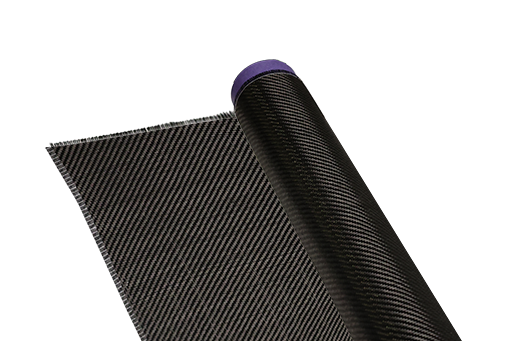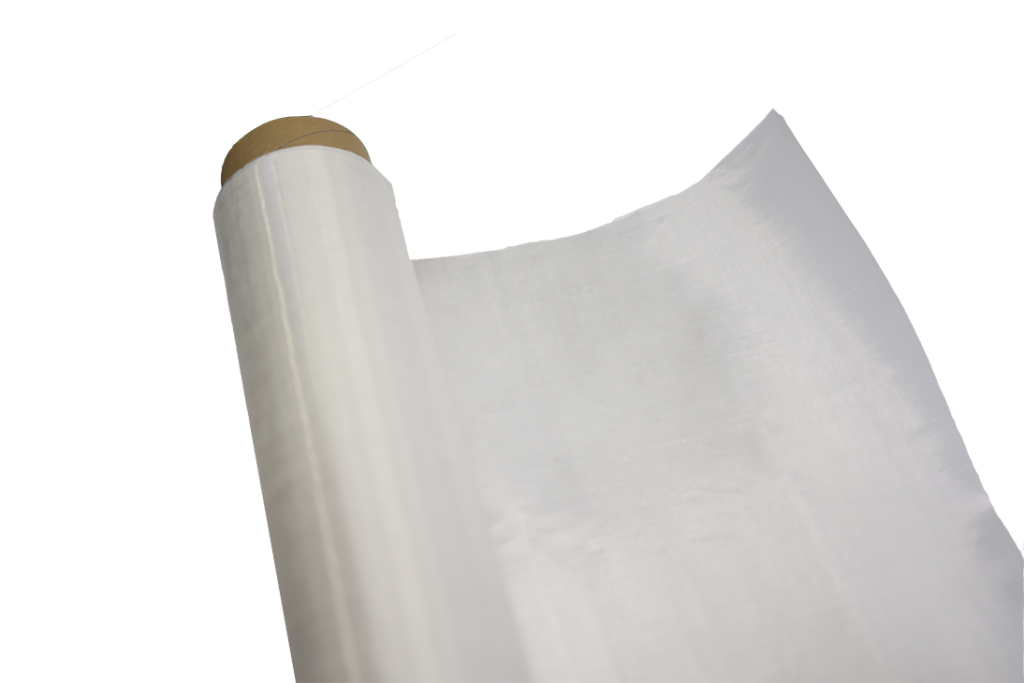Kevlar Sees Increased Use in EV Battery Protection Systems
-
Table of Contents
“Kevlar: Powering the Future with Unmatched Protection for EV Batteries.”
Kevlar, a high-strength synthetic fiber known for its exceptional durability and resistance to heat and impact, is increasingly being integrated into electric vehicle (EV) battery protection systems. As the demand for electric vehicles rises, so does the need for enhanced safety measures to protect battery packs from potential damage during accidents or thermal events. The incorporation of Kevlar into battery enclosures and protective casings provides a lightweight yet robust solution, significantly improving the structural integrity and safety of EV batteries. This trend not only addresses safety concerns but also contributes to the overall performance and longevity of electric vehicles, making Kevlar a critical material in the evolution of EV technology.
Kevlar’s Role in Enhancing EV Battery Safety
As the electric vehicle (EV) market continues to expand, the safety of battery systems has become a paramount concern for manufacturers and consumers alike. Among the various materials being explored to enhance battery safety, Kevlar has emerged as a leading candidate due to its unique properties. Originally developed for use in bulletproof vests, Kevlar is a synthetic fiber known for its exceptional strength-to-weight ratio and resistance to impact and heat. These characteristics make it an ideal choice for protecting the delicate components of EV batteries, which are often vulnerable to damage from external forces.
The integration of Kevlar into EV battery protection systems serves multiple purposes. First and foremost, it provides a robust barrier against physical impacts. In the event of a collision, the battery pack is at risk of being punctured or crushed, which can lead to catastrophic failures, including fires or explosions. By encasing battery cells in Kevlar-reinforced materials, manufacturers can significantly reduce the likelihood of such incidents. This added layer of protection not only enhances the safety of the vehicle but also instills greater confidence in consumers, who may be apprehensive about the risks associated with electric vehicles.
Moreover, Kevlar’s thermal stability plays a crucial role in managing the heat generated during battery operation. Lithium-ion batteries, the most common type used in EVs, can experience thermal runaway, a condition where the battery overheats and can lead to fires. By incorporating Kevlar into the thermal management systems of batteries, manufacturers can help dissipate heat more effectively, thereby reducing the risk of overheating. This is particularly important as EVs are designed to deliver high performance, which often results in increased energy output and, consequently, more heat generation. The ability of Kevlar to withstand high temperatures without degrading further enhances its suitability for this application.
In addition to its protective qualities, Kevlar is also lightweight, which is a critical factor in the design of electric vehicles. The overall weight of an EV directly impacts its efficiency and range; therefore, using materials that do not add unnecessary bulk is essential. Kevlar’s lightweight nature allows manufacturers to maintain or even reduce the overall weight of the battery system while still providing superior protection. This balance between safety and efficiency is vital as the industry strives to improve the performance of electric vehicles without compromising on safety standards.
Furthermore, the use of Kevlar in battery protection systems aligns with the broader trend of incorporating advanced materials into automotive design. As manufacturers seek to innovate and differentiate their products in a competitive market, the adoption of high-performance materials like Kevlar can provide a significant advantage. This trend is not only limited to battery protection but extends to various components of electric vehicles, where the demand for lightweight, durable materials is on the rise.
In conclusion, the increased use of Kevlar in EV battery protection systems represents a significant advancement in enhancing the safety and reliability of electric vehicles. By leveraging its unique properties, manufacturers can address critical safety concerns while also improving the overall performance of their products. As the electric vehicle market continues to grow, the role of innovative materials like Kevlar will undoubtedly become more prominent, paving the way for safer and more efficient transportation solutions. The ongoing research and development in this area will likely yield even more applications for Kevlar, further solidifying its place in the future of automotive safety.
The Benefits of Kevlar in Electric Vehicle Battery Protection

As the electric vehicle (EV) market continues to expand, the need for robust safety measures in battery protection systems has become increasingly critical. One material that has gained significant attention in this context is Kevlar, a high-performance synthetic fiber known for its exceptional strength and durability. The integration of Kevlar into EV battery protection systems offers a multitude of benefits that enhance both safety and performance, making it an ideal choice for manufacturers aiming to meet the rigorous demands of modern electric vehicles.
To begin with, the primary advantage of Kevlar lies in its remarkable tensile strength. This material is five times stronger than steel on an equal weight basis, which means that it can effectively withstand the physical stresses and impacts that batteries may encounter during operation. In the event of a collision or other external forces, Kevlar’s ability to absorb and dissipate energy helps to protect the battery cells from damage, thereby reducing the risk of catastrophic failures such as thermal runaway. This characteristic is particularly crucial, as battery safety is a paramount concern for both manufacturers and consumers alike.
Moreover, Kevlar is lightweight, which is an essential factor in the design of electric vehicles. The automotive industry is increasingly focused on improving energy efficiency and extending the range of EVs, and every ounce of weight saved contributes to these goals. By incorporating Kevlar into battery protection systems, manufacturers can achieve a balance between safety and weight reduction, ultimately enhancing the overall performance of the vehicle. This lightweight nature does not compromise the protective qualities of Kevlar; rather, it complements the need for efficient energy use in electric vehicles.
In addition to its strength and lightweight properties, Kevlar is also resistant to various environmental factors, including heat, chemicals, and moisture. This resistance is particularly beneficial in the context of EV batteries, which can generate significant heat during operation. By utilizing Kevlar in battery enclosures, manufacturers can ensure that the protective systems remain intact and effective even under extreme conditions. This durability not only prolongs the lifespan of the battery but also contributes to the overall reliability of the vehicle, instilling greater confidence in consumers regarding the safety of their electric vehicles.
Furthermore, the use of Kevlar in battery protection systems aligns with the growing emphasis on sustainability within the automotive industry. As manufacturers seek to reduce their environmental footprint, the longevity and resilience of Kevlar contribute to a more sustainable lifecycle for electric vehicles. By minimizing the need for frequent replacements or repairs, Kevlar helps to reduce waste and resource consumption, supporting the broader goals of sustainability and environmental responsibility.
In conclusion, the increased use of Kevlar in electric vehicle battery protection systems represents a significant advancement in automotive safety and performance. Its exceptional strength, lightweight nature, resistance to environmental factors, and alignment with sustainability goals make it an ideal material for enhancing the safety and reliability of EV batteries. As the electric vehicle market continues to evolve, the integration of innovative materials like Kevlar will play a crucial role in shaping the future of automotive design, ensuring that safety and performance remain at the forefront of technological advancements. Ultimately, the adoption of Kevlar not only benefits manufacturers but also provides consumers with greater peace of mind as they embrace the transition to electric mobility.
Innovations in Kevlar Technology for EV Applications
In recent years, the automotive industry has witnessed a significant shift towards electric vehicles (EVs), driven by the need for sustainable transportation solutions and advancements in battery technology. As the demand for EVs continues to rise, so does the necessity for enhanced safety measures, particularly concerning battery protection systems. In this context, Kevlar, a high-performance synthetic fiber known for its exceptional strength and durability, has emerged as a critical material in the development of innovative battery protection solutions. The integration of Kevlar into EV battery systems not only enhances safety but also contributes to the overall efficiency and longevity of electric vehicles.
One of the primary advantages of Kevlar is its remarkable tensile strength, which is five times stronger than steel on an equal weight basis. This characteristic makes it an ideal candidate for protecting the delicate components of EV batteries, which are often vulnerable to physical damage from impacts or punctures. By incorporating Kevlar into battery enclosures and protective casings, manufacturers can significantly reduce the risk of battery failure due to external forces. This is particularly important in the context of EVs, where battery integrity is paramount for both performance and safety. As a result, the use of Kevlar in battery protection systems not only safeguards the battery itself but also enhances the overall safety of the vehicle, providing peace of mind to consumers.
Moreover, the lightweight nature of Kevlar contributes to the overall efficiency of electric vehicles. In the quest for improved range and performance, every ounce of weight saved can lead to enhanced energy efficiency. By utilizing Kevlar in battery protection systems, manufacturers can create robust yet lightweight enclosures that do not compromise the vehicle’s performance. This innovative approach allows for a more efficient use of energy, ultimately extending the driving range of EVs and making them more appealing to consumers. As the automotive industry continues to prioritize sustainability, the lightweight properties of Kevlar align perfectly with the goals of reducing energy consumption and minimizing environmental impact.
In addition to its strength and lightweight characteristics, Kevlar also exhibits excellent thermal stability, which is crucial for the safe operation of EV batteries. Lithium-ion batteries, commonly used in electric vehicles, can generate significant heat during charging and discharging cycles. If not properly managed, this heat can lead to thermal runaway, a dangerous condition that can result in battery failure or even fires. By incorporating Kevlar into battery protection systems, manufacturers can enhance thermal management capabilities, ensuring that batteries remain within safe operating temperatures. This innovative application of Kevlar technology not only improves safety but also contributes to the overall reliability and performance of electric vehicles.
Furthermore, ongoing research and development in Kevlar technology are paving the way for even more advanced applications in the EV sector. Innovations such as Kevlar composites and hybrid materials are being explored to further enhance the protective qualities of Kevlar while also reducing costs. As manufacturers continue to invest in these advancements, the potential for Kevlar to revolutionize battery protection systems in electric vehicles becomes increasingly apparent.
In conclusion, the increased use of Kevlar in EV battery protection systems represents a significant advancement in automotive safety and efficiency. Its unique properties, including high tensile strength, lightweight nature, and thermal stability, make it an ideal material for safeguarding the critical components of electric vehicles. As the industry continues to evolve, the integration of Kevlar technology will undoubtedly play a pivotal role in shaping the future of electric mobility, ensuring that safety and performance remain at the forefront of innovation.
Q&A
1. **Question:** What is Kevlar and why is it used in EV battery protection systems?
**Answer:** Kevlar is a high-strength synthetic fiber known for its durability and resistance to impact and heat. It is used in EV battery protection systems to enhance safety by providing a lightweight, strong barrier that can withstand punctures and thermal events.
2. **Question:** How does Kevlar improve the safety of electric vehicle batteries?
**Answer:** Kevlar improves safety by preventing damage to battery cells from external impacts, reducing the risk of battery punctures that can lead to fires or explosions, and by containing any potential thermal runaway events.
3. **Question:** What are the benefits of using Kevlar in comparison to traditional materials for battery protection?
**Answer:** The benefits of using Kevlar include its superior strength-to-weight ratio, which reduces overall vehicle weight, enhanced resistance to environmental factors, and improved energy absorption capabilities, leading to better overall safety and performance in electric vehicles.The increased use of Kevlar in electric vehicle (EV) battery protection systems highlights its effectiveness in enhancing safety and durability. As EV adoption grows, the demand for robust materials that can withstand impacts and thermal events becomes critical. Kevlar’s lightweight, high-strength properties make it an ideal choice for protecting battery packs from damage, thereby improving overall vehicle safety and performance. This trend not only reflects advancements in material science but also underscores the automotive industry’s commitment to innovation and safety in the transition to electric mobility.











